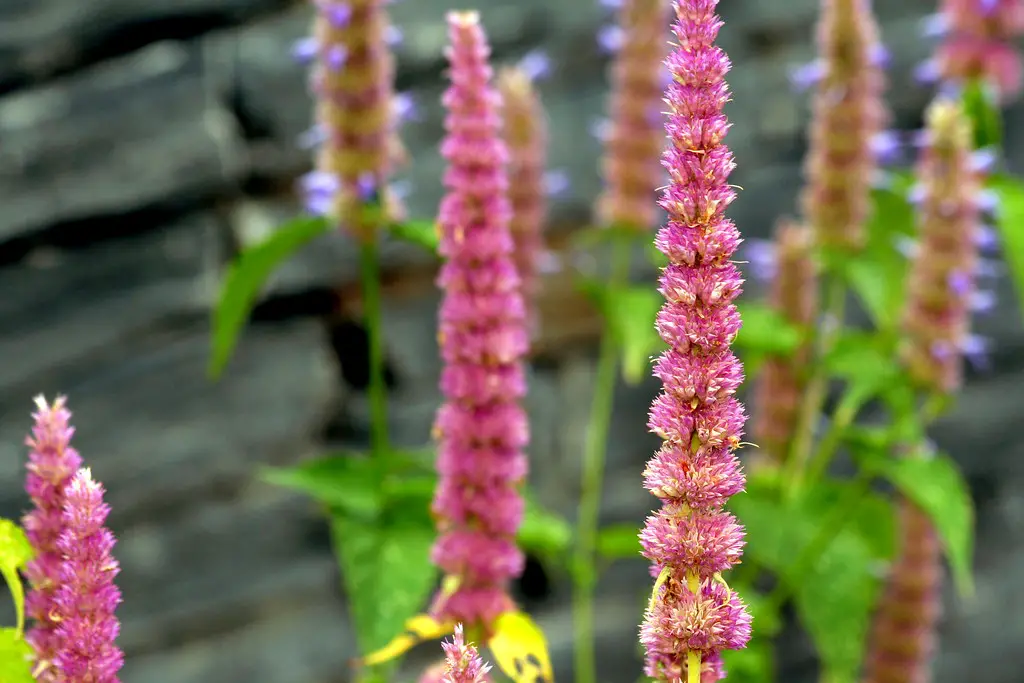Agastache, commonly known as Hyssop, is a genus that boasts both decorative and medicinal benefits. This perennial herb is part of the mint family and is prized for its showy spikes of aromatic flowers, which can range from pink and lavender to bright blue and orange. Agastache varieties are highly attractive to pollinators, such as bees, hummingbirds, and butterflies, making them a garden favorite.
Agastache has been a traditional part of herbal medicine for centuries, originating from North America, parts of Asia, and Mexico. It has been used in treatments for various ailments, including digestive issues and respiratory problems. With an appearance that adds charm to any garden and therapeutic benefits that appeal to herbalists, Agastache’s popularity continues to grow.
Adaptable to various environmental conditions and requiring minimal maintenance, Agastache is an excellent choice for both experienced gardeners and novices. Its vibrant colors, minty fragrance, and versatile uses in the garden and kitchen make it a multifaceted plant worth exploring.
| Attribute | Details |
|---|---|
| Common Names | Hyssop, Hummingbird Mint |
| Botanical Name | Agastache spp. |
| Family | Lamiaceae (Mint family) |
| Plant Type | Perennial Herb |
| Mature Size | 1-3 feet tall |
| Sun Exposure | Full sun |
| Soil Type | Well-drained, moderately rich soil |
| Hardiness Zones | 4-10 depending on species |
| Native Area | North America, parts of Asia, Mexico |
Agastache Care
Agastache care is generally low-maintenance, making it a suitable plant for various garden styles and skill levels. Thriving in sunny locations, it needs regular watering but tolerates drought well once established. Its aromatic leaves and bright flowers add aesthetic appeal, while also serving culinary and medicinal purposes.
A significant factor in Agastache’s success is the soil condition. While it adapts to different soil types, proper drainage is crucial to avoid root rot and other moisture-related problems. Mulching can be beneficial to retain moisture and control weeds.
Light Requirement for Agastache
Agastache thrives best in full sun, meaning it needs at least 6-8 hours of direct sunlight per day. While it can tolerate partial shade, too little sun may result in fewer flowers and a less vigorous plant.
Soil Requirements for Agastache
Well-drained soil is essential for Agastache’s healthy growth. Though it adapts to various soil types, including sandy or rocky soil, adding organic matter can enhance its nutrient content. Soil pH can range from slightly acidic to slightly alkaline.
Water Requirements for Agastache
Agastache requires regular watering, especially during the first growing season to establish a deep, extensive root system. Once established, it becomes more drought-tolerant. Overwatering should be avoided as it can lead to root rot.
Temperature and Humidity
Agastache is quite adaptable to different temperature ranges but prefers moderate climates. Most varieties are hardy in USDA zones 4-10. It does not require high humidity and can thrive in typical garden conditions.
Fertilizer
Agastache usually doesn’t need additional fertilization if planted in rich soil. If the soil is poor, a slow-release granular fertilizer can be applied in the spring to promote growth.
Pruning Agastache
Pruning Agastache mainly involves deadheading spent flowers to encourage further blooming. Cutting back the plant in the fall or early spring can help maintain its shape and promote healthy new growth.
Propagating Agastache
Agastache can be propagated through seed or by dividing the plant. Division is typically done in spring or early fall. Taking cuttings in late spring or early summer is also a viable propagation method.
How To Grow Agastache From Seed
Growing Agastache from seed can be started indoors 6-8 weeks before the last frost or directly sowed outside in the spring. Seeds should be lightly covered with soil and kept moist until germination.
Common Pests & Plant Diseases
While relatively resistant to pests, Agastache may suffer from aphids and spider mites. Proper watering and avoiding overly moist conditions can prevent fungal diseases like powdery mildew.
Common Problems With Agastache
Root Rot
This occurs due to overwatering or poor drainage. Ensuring proper soil conditions can mitigate this problem.
Poor Flowering
Lack of sun or poor soil may result in sparse flowering. Correcting these conditions will usually lead to improved blooming.
Winter Damage
Some Agastache varieties may suffer from winter damage if left exposed to harsh conditions. Providing adequate mulch or winter protection can alleviate this issue.
Pro Tips
- Choose the right Agastache variety for your specific zone and garden conditions.
- Ensure full sun and well-drained soil for optimal growth.
- Avoid overwatering and provide proper drainage to prevent root rot.
- Deadhead spent flowers to encourage continuous blooming.
- Consider companion planting with plants that share similar growing conditions.

